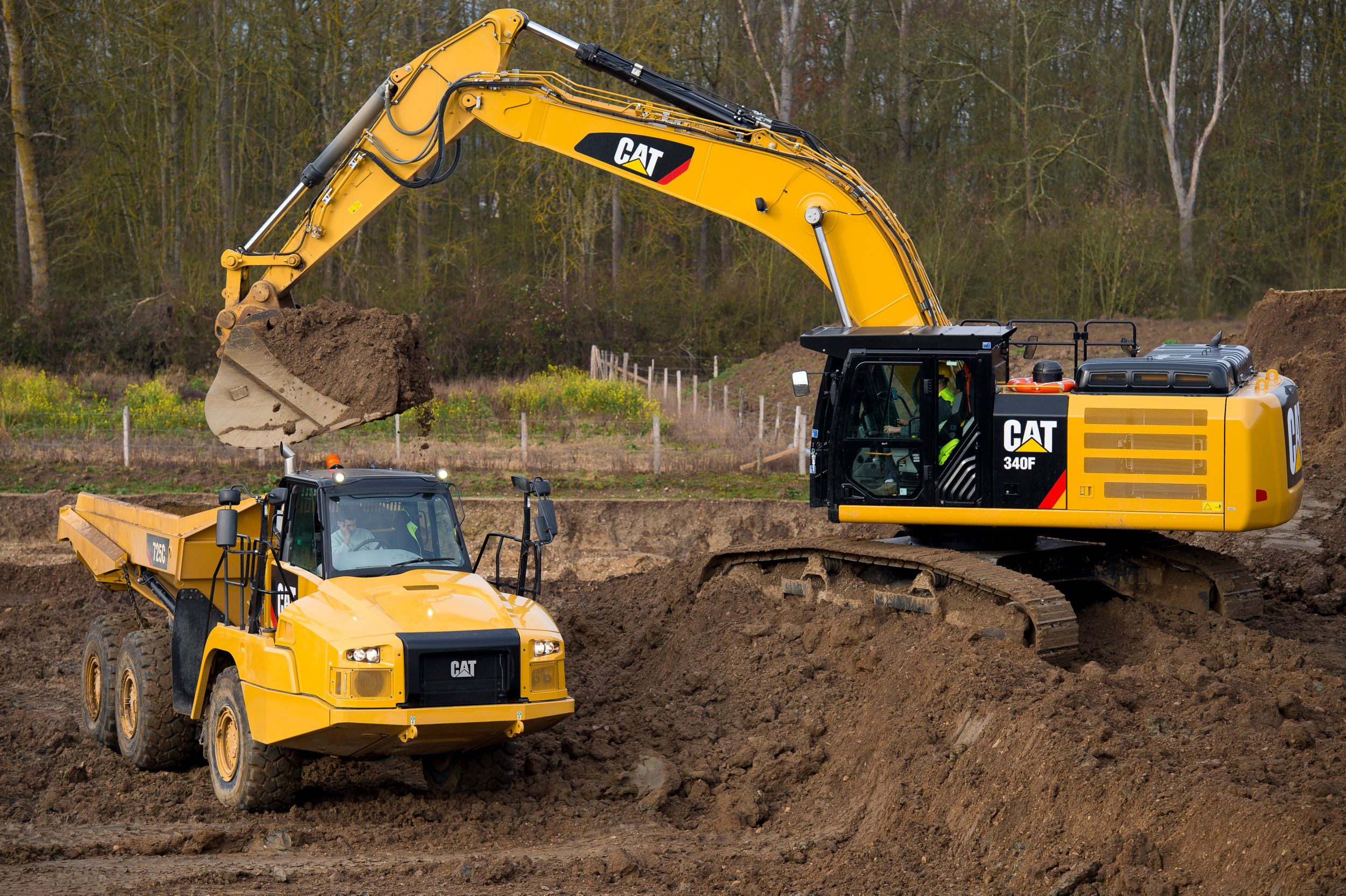

Sign In
Welcome! Sign In to personalize your Cat.com experience
If you already have an existing account with another Cat App, you can use the same account to sign in here
Register Now
One Account. All of Cat.
Your Caterpillar account is the single account you use to log in to select services and applications we offer. Shop for parts and machines online, manage your fleet, go mobile, and more.
Account Information
Site Settings
Security
An Essential Piece
Hydraulic Excavator Versatility Helps County Meet Workload
With approval of a $6 million bond issue for construction and improvements to roads and bridges, this has been a busy year for the Highway Department in York County, Nebraska.
The bond is funding the replacement of 12 bridges, the resurfacing of 26 miles of roadway, and several smaller paving projects. In addition, highway department crews are maintaining 165 existing bridges, as well as 1,050 miles of unpaved roadway and 50 miles of paved roads.
Maintenance includes grading, correcting road profiles to improve drainage, adding gravel, filling potholes, smoothing washboard ridges, ditch cleaning, along with bridge maintenance.
A newly implemented preventive maintenance program for bridges includes guard rail repair, concrete grouting, washing deicing salt off bridges, and placing riprap beneath bridges to prevent scouring.
A Cat® 329E Hydraulic Excavator—utilized primarily by the bridge crew—helps county employees keep pace with the strenuous workload. “There’s a lot of work to be done by the bridge crew, and that piece is essential for them,” said Mitch Doht, county engineer and highway superintendent.
ON THE JOB
Tasks completed utilizing the 329E Excavator include placement of rip rap, sorting of rebar to recycle steel, ditch cleaning, the removal of debris from channels to prevent bridge damage, and tree removal.
Machine versatility is enhanced through the use of a variety of bucket sizes and types—including a ditch cleaning bucket and rock bucket—as well as other work tool attachments. A Center-Lock™ Pin Grabber Quick Coupler on the excavator enables the operator to switch buckets and other attachments in seconds without leaving the seat.
“A hydraulic thumb attached to the stick is elemental to the operation of the machine and its efficiency,” said Ryan Stastny, bridge crew foreman.
The hydraulic thumb is much easier to operate and improves work efficiency by 15 to 20 percent compared to a non-hydraulic thumb. “When I’m removing trees, that hydraulic thumb really speeds up the process. I can remove larger trees and larger amounts of trees,” said Stastny.
Product Link™ records show that the 329E is burning 4.0 gallons of fuel per hour in the year since it was purchased, an improvement compared to the machine that was replaced. “We think that’s really, really good,” said Doht. “It’s an efficient machine.”
“WE DON’T HAVE TO USE ANY ADDITIVES."
On average, the 329E burns 3 percent less fuel than previous models. The Cat C7.1 ACERT engine also delivers more power, and meets Tier 4 Interim emission standards.
The machine has the flexibility of running on either ultra-low-sulfur (ULSD) fuel with 15 ppm of sulfur or less, or biodiesel (B20) fuel blended with ULSD.
“We can burn what we buy—plain old, number two diesel,” said Pat O’Brien, shop foreman. “We don’t have to use any additives. It’s designed to run at 15 parts per million or less sulfur that are common in today’s fuels.”
The excellent anticipated trade-in value of the unit was a large factor in the decision to purchase the machine, which was acquired using Life Cycle Costing. The county board made the purchase based on total cost of ownership, realizing the trade-in value at the end of our use of the machine would be excellent, Doht said.
TO SERVE AND PROTECT
Dealer service was another factor in the decision. “Our Cat dealer has been very responsive to our needs. Whatever we need, they have a solution,” said Doht.
Nebraska Machinery technicians handle all warranty work on the highway department’s fleet of 12 Cat machines, while county crews provide general maintenance with occasional assistance from the dealership. “A lot of times, they can help us fix a problem over the telephone,” O’Brien said. “Parts availability is excellent. If they don’t have it, most times they can get it to you the next day.”
The operators are responsible for much of the machine maintenance, such as greasing. Stastny said of 329E maintenance, “The machine is very simple to service. Hydraulic and engine oil are easy to access and easy to drain.”
Service is augmented by the utilization of S•O•SSM Fluids Sampling, which O’Brien credits with saving the engine of a 163H Motor Grader. An oil sample revealed an elevated level of diesel fuel, which indicated undetected engine problems.
“We tore into the engine and found one injector was leaking fuel into the oil. If that went undetected, it probably would have diluted the oil and washed the bearings out or potentially caused extensive damage to the bottom end of the engine,” said O’Brien. “The oil sampling caught it, and saved the engine.”
In York County, that is how the highway department keeps pace with an increased workload.
RELATED ARTICLES
You’re here to get ideas to grow your business. Read on for machine insights and expert tips and tricks to get more out of every job.
-
Better Bids In Five Steps
Whether you’re putting together your first bid or your 500th, here are a few strategies you can follow that will make the process easier.
Learn More -
Rolling Resistance Factors
You can use rolling resistance factors to help you identify which equipment will be most efficient on your worksite.
Learn More -
How to Measure Loose Density in the Field
Material Density determines bucket and machine choices. Construction companies often select the size of machine they believe is required and equip it with a standard bucket, but this approach might short change productivity.
Learn More -
Swell & Void Percentage, Load Factors
Learn about Swell and Void Percentages, load factors and how they can affect your fuel efficiency.
Learn More





